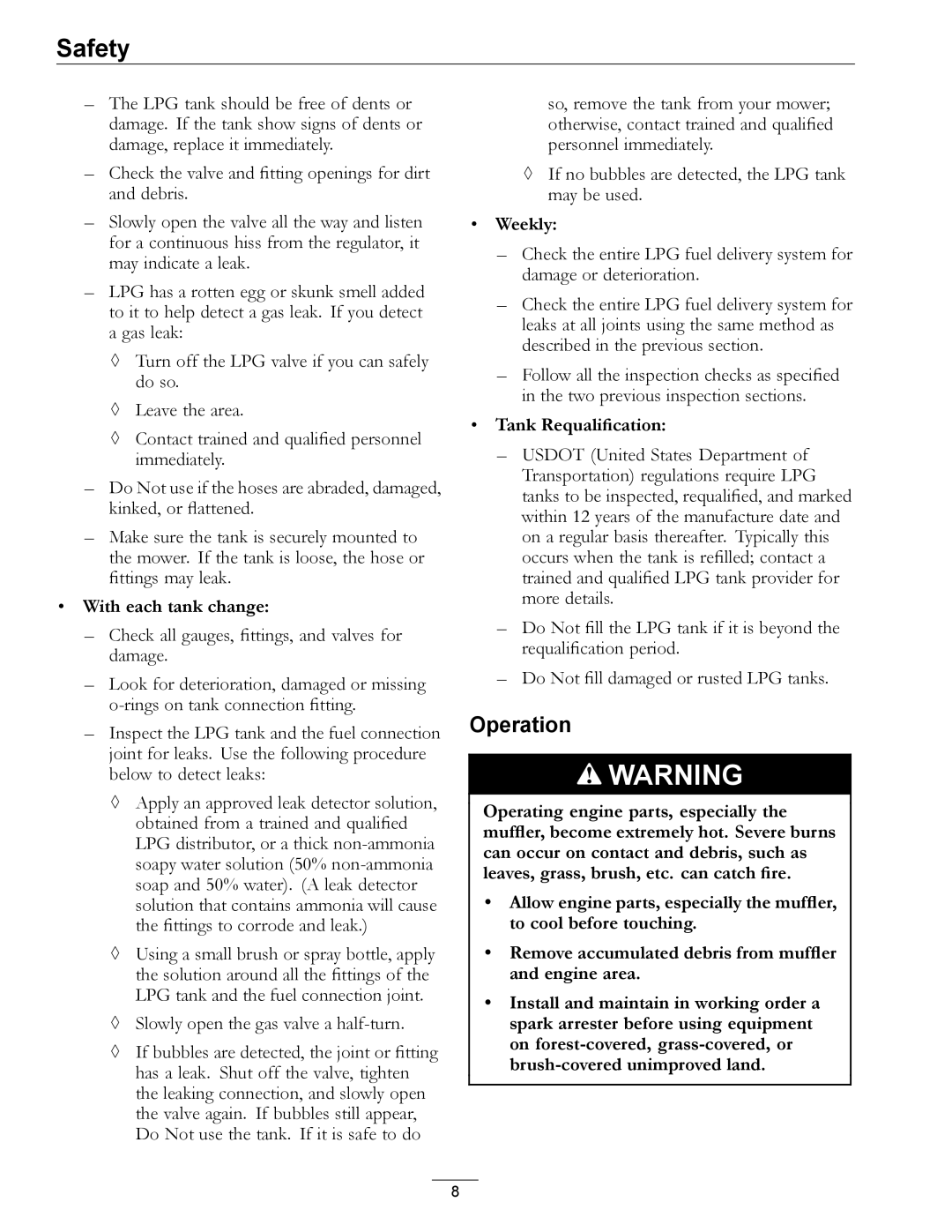
Safety
–The LPG tank should be free of dents or damage. If the tank show signs of dents or damage, replace it immediately.
–Check the valve and fitting openings for dirt and debris.
–Slowly open the valve all the way and listen for a continuous hiss from the regulator, it may indicate a leak.
–LPG has a rotten egg or skunk smell added to it to help detect a gas leak. If you detect a gas leak:
◊Turn off the LPG valve if you can safely do so.
◊Leave the area.
◊Contact trained and qualified personnel immediately.
–Do Not use if the hoses are abraded, damaged, kinked, or flattened.
–Make sure the tank is securely mounted to the mower. If the tank is loose, the hose or fittings may leak.
•With each tank change:
–Check all gauges, fittings, and valves for damage.
–Look for deterioration, damaged or missing
–Inspect the LPG tank and the fuel connection joint for leaks. Use the following procedure below to detect leaks:
◊Apply an approved leak detector solution, obtained from a trained and qualified LPG distributor, or a thick
◊Using a small brush or spray bottle, apply the solution around all the fittings of the LPG tank and the fuel connection joint.
◊Slowly open the gas valve a half-turn.
◊If bubbles are detected, the joint or fitting has a leak. Shut off the valve, tighten the leaking connection, and slowly open the valve again. If bubbles still appear, Do Not use the tank. If it is safe to do
so, remove the tank from your mower; otherwise, contact trained and qualified personnel immediately.
◊If no bubbles are detected, the LPG tank may be used.
•Weekly:
–Check the entire LPG fuel delivery system for damage or deterioration.
–Check the entire LPG fuel delivery system for leaks at all joints using the same method as described in the previous section.
–Follow all the inspection checks as specified in the two previous inspection sections.
•Tank Requalification:
–USDOT (United States Department of Transportation) regulations require LPG tanks to be inspected, requalified, and marked within 12 years of the manufacture date and on a regular basis thereafter. Typically this occurs when the tank is refilled; contact a trained and qualified LPG tank provider for more details.
–Do Not fill the LPG tank if it is beyond the requalification period.
–Do Not fill damaged or rusted LPG tanks.
Operation
![]() WARNING
WARNING
Operating engine parts, especially the muffler, become extremely hot. Severe burns can occur on contact and debris, such as leaves, grass, brush, etc. can catch fire.
•Allow engine parts, especially the muffler, to cool before touching.
•Remove accumulated debris from muffler and engine area.
•Install and maintain in working order a spark arrester before using equipment on
8
